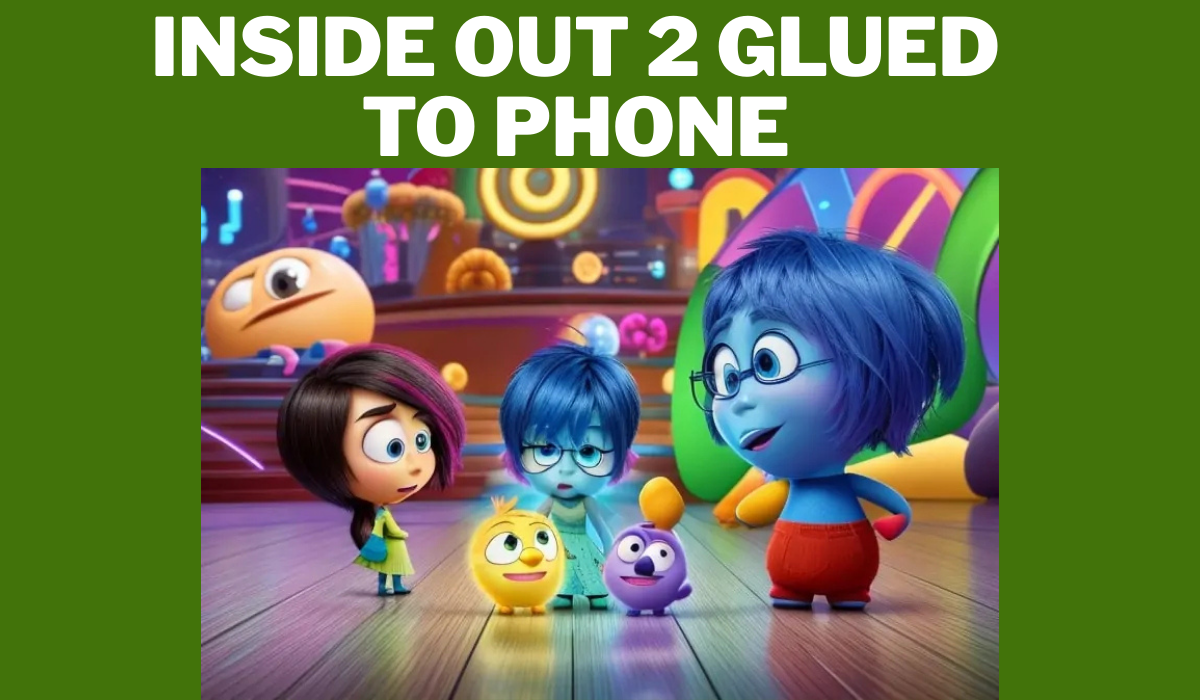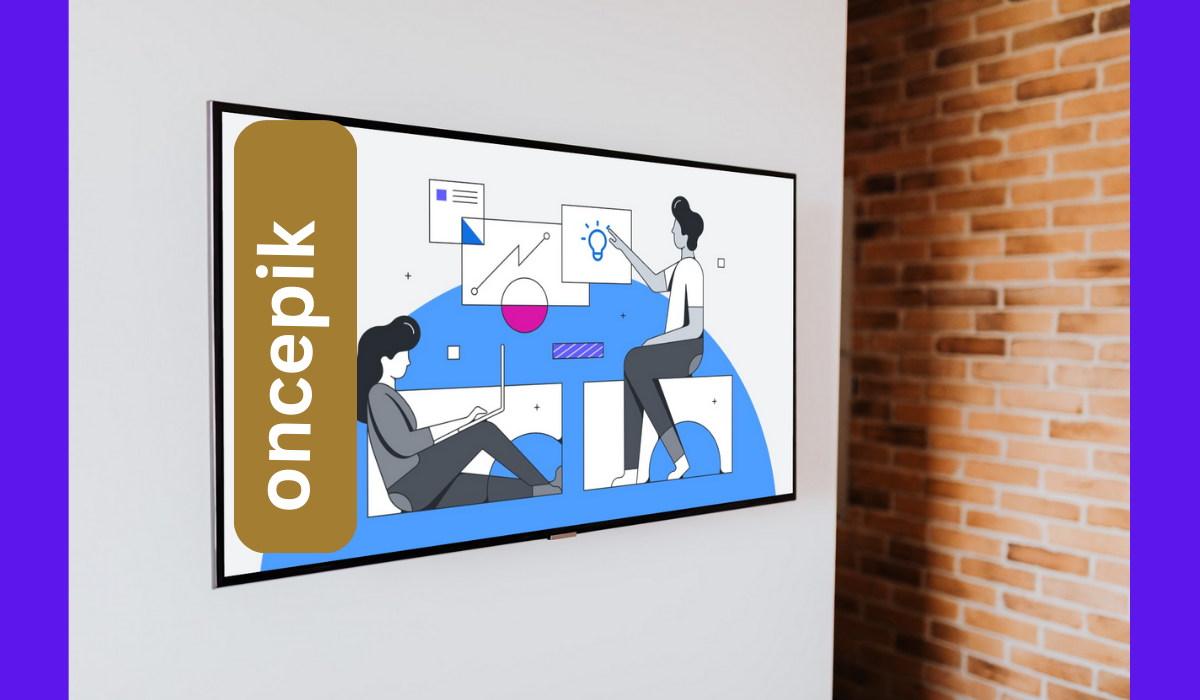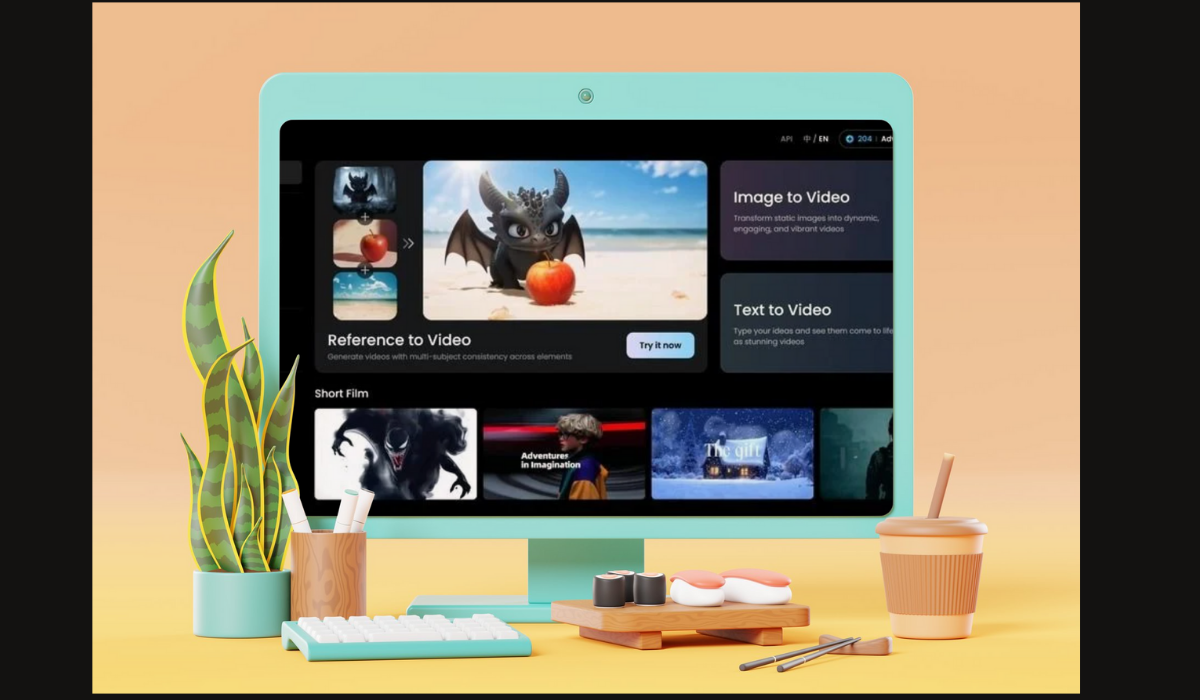Disney Pixar’s Inside Out 2 struck a chord with audiences worldwide, not just for its colorful animation and emotional storytelling, but for its strikingly realistic portrayal of teenage phone addiction. The film shows protagonist Riley constantly checking her device, scrolling through social media, and struggling to disconnect—a scene that feels uncomfortably familiar to millions of parents watching alongside their teens.
The movie’s depiction of Riley being glued to her phone isn’t just artistic license; it’s a reflection of a genuine crisis facing today’s adolescents. Recent studies show that teens spend an average of 7-9 hours daily on screens, with smartphones being their primary gateway to digital worlds. This isn’t simply about entertainment or communication anymore—it’s become a fundamental part of how teenagers experience and process their reality.
What makes Inside Out 2’s portrayal particularly powerful is how it connects phone usage to the film’s core theme: the complexity of teenage emotions. Riley’s phone becomes both a source of anxiety and a coping mechanism, mirroring the paradoxical relationship many teens have with their devices. The film suggests that excessive phone use isn’t just a behavioral issue—it’s deeply intertwined with emotional development, identity formation, and mental health.
As parents, educators, and mental health professionals grapple with rising rates of teen anxiety and depression, Inside Out 2’s honest portrayal of phone addiction opens up crucial conversations about technology’s role in adolescent development. The question isn’t whether teens should use phones, but how we can help them develop a healthier relationship with the devices that have become extensions of themselves.
Understanding the Irresistible Pull of the Screen
Smartphones have transformed from communication tools into powerful psychological triggers designed to capture and hold attention. For teenagers, whose brains are still developing critical thinking and impulse control abilities, these devices present an almost irresistible combination of social validation, entertainment, and escape.
The architecture of most popular apps deliberately exploits what psychologists call “intermittent reinforcement”—the same principle that makes gambling addictive. Every notification, like, comment, or message provides a small dopamine hit, creating a cycle where teens constantly check their phones hoping for the next social reward. This biological response isn’t a character flaw; it’s human nature amplified by sophisticated technology.
Social connection drives much of teenage phone usage. Adolescence is naturally a time when peer relationships become increasingly important, and smartphones offer 24/7 access to social networks. Text messages, social media platforms, and gaming communities provide constant opportunities for interaction, validation, and belonging. For many teens, being offline feels like being socially invisible or left out of important conversations and events.
The fear of missing out, commonly known as FOMO, has been magnified exponentially by social media. Teens see curated highlights of their peers’ lives and worry they’re not measuring up socially, academically, or personally. This anxiety often drives compulsive checking behaviors as they seek reassurance that they haven’t missed anything important or that their own posts are receiving adequate attention.
Entertainment and escapism also play significant roles. Phones offer infinite streams of videos, games, music, and content that can provide immediate relief from boredom, stress, or difficult emotions. For teens dealing with academic pressure, family conflicts, or social challenges, their phone becomes a reliable source of distraction and comfort.
The Mental Health Connection
The relationship between excessive phone use and teen mental health has become increasingly clear through research and clinical observation. While phones aren’t inherently harmful, problematic usage patterns can contribute to or exacerbate mental health challenges that are already common during adolescence.
Anxiety levels among teenagers have risen dramatically over the past decade, coinciding with widespread smartphone adoption. Constant connectivity creates pressure to be perpetually available and responsive. Teens report feeling anxious when separated from their phones, when battery levels get low, or when they don’t receive expected responses to messages. This “nomophobia”—fear of being without one’s phone—has become remarkably common.
Sleep disruption represents another significant mental health impact. The blue light emitted by phone screens interferes with natural circadian rhythms, making it harder to fall asleep. More problematically, many teens keep their phones beside their beds, responding to notifications throughout the night or staying awake scrolling through content. Poor sleep quality directly affects mood regulation, academic performance, and overall emotional stability.
Social media platforms, accessed primarily through phones, have been linked to increased rates of depression and body image issues among teenagers. Constant comparison with others’ highlight reels can foster feelings of inadequacy, loneliness, and low self-worth. Teen girls appear particularly vulnerable to these effects, especially regarding appearance-related content and cyberbullying.
The phenomenon of “continuous partial attention” also affects teen mental health. When phones constantly interrupt focus with notifications and the temptation to check for updates, teens struggle to engage deeply with activities, conversations, or their own thoughts. This fragmented attention can increase stress levels and make it difficult to experience the satisfaction that comes from sustained engagement with meaningful activities.
Paradoxically, phones meant to connect us can also increase feelings of loneliness and isolation. When teens consistently choose digital interaction over face-to-face communication, they may miss out on the deeper emotional connections and social skill development that come from in-person relationships.
Social Skills in the Digital Age
Perhaps one of the most concerning aspects of teen phone obsession is its impact on social development. The teenage years are crucial for learning how to navigate complex social situations, read nonverbal cues, handle conflict, and build meaningful relationships. When much of social interaction moves to digital platforms, important developmental opportunities can be lost.
Face-to-face conversation skills require practice, and teens who primarily communicate through text and social media may struggle with in-person interactions. Reading facial expressions, interpreting tone of voice, and responding appropriately to social cues are skills that develop through real-world practice. Digital communication, while valuable, can’t fully replicate these learning opportunities.
The art of being present with others is also at risk. When teens habitually check their phones during conversations or social gatherings, they send signals that the people they’re with aren’t their top priority. This behavior can damage relationships and prevent the formation of deeper connections. Friends and family members may feel ignored or devalued when competing with a smartphone for attention.
Conflict resolution skills represent another area of concern. Digital communication makes it easier to avoid difficult conversations or to engage in misunderstandings that escalate quickly without nonverbal context. Teens may become more comfortable with ghosting, blocking, or other avoidance strategies rather than learning to work through disagreements constructively.
Group dynamics also shift when phones are constantly present. Social gatherings can become less interactive and engaging when individuals are simultaneously participating in digital conversations. The shared experiences that build group bonds and create lasting memories may be diminished when attention is divided between present company and virtual connections.
Guidance for Parents
Parents play a crucial role in helping teenagers develop healthy relationships with their phones, but this requires a delicate balance between setting boundaries and respecting teens’ growing independence. Effective strategies focus on modeling good behavior, maintaining open communication, and collaboratively establishing reasonable limits.
Leading by example proves more powerful than rules alone. Parents who constantly check their own phones, respond to work emails during family time, or prioritize digital interactions over face-to-face conversations shouldn’t be surprised when teens adopt similar behaviors. Demonstrating mindful phone use—putting devices away during meals, engaging fully in conversations, and setting boundaries between work and family time—provides a template for healthy behavior.
Open, non-judgmental conversations about phone use work better than lectures or ultimatums. Parents can ask teens about their favorite apps, what they enjoy about their online activities, and how phone use makes them feel. Understanding the positive aspects of teen phone use helps parents offer more balanced guidance and shows respect for teens’ perspectives.
Collaborative boundary-setting tends to be more successful than imposed restrictions. Parents and teens can work together to establish phone-free times or zones, such as during family meals, an hour before bedtime, or during homework time. When teens participate in creating these boundaries, they’re more likely to follow them and understand their purpose.
Physical strategies can support healthy phone habits. Charging stations outside bedrooms prevent nighttime scrolling and improve sleep quality. Designated phone-free zones in common areas encourage more family interaction. Some families implement “phone stacks” during meals, where everyone places their device in a central location.
Parents should also help teens recognize the signs of problematic phone use in themselves. Teaching teens to notice when phone use is interfering with sleep, relationships, academic performance, or mood can help them develop self-awareness and self-regulation skills.
Engaging Alternatives to Screen Time
Creating appealing alternatives to phone use requires understanding what needs phones fulfill for teenagers and finding other activities that meet those same needs. The goal isn’t to eliminate phones entirely but to help teens develop a more varied and balanced range of interests and coping strategies.
Physical activities provide natural alternatives to screen time while offering mental health benefits. Team sports, individual fitness activities, outdoor adventures, or even regular walks can provide stress relief, social connection, and a sense of accomplishment. The key is finding activities that teens genuinely enjoy rather than imposing activities they find boring or stressful.
Creative pursuits offer another powerful alternative. Whether it’s music, art, writing, photography, or crafts, creative activities provide the kind of deep engagement that phones often interrupt. These activities can also provide healthy outlets for self-expression and emotional processing that teens might otherwise seek through social media.
Social activities that don’t revolve around phones can help teens rediscover the joy of in-person connection. Board game nights, cooking together, volunteer work, or group activities like hiking or attending concerts provide opportunities for meaningful interaction without digital distractions.
Learning-based activities can satisfy teens’ curiosity and desire for mental stimulation. This might include learning a musical instrument, studying a new language, reading engaging books, or pursuing hobbies like gardening or coding. The key is finding topics that genuinely interest the individual teen.
Mindfulness and relaxation activities can provide healthy alternatives to using phones for stress relief or boredom. Meditation, yoga, journaling, or simply spending quiet time in nature can help teens develop internal resources for managing difficult emotions and situations.
Expert Perspectives on Digital Balance
Mental health professionals increasingly recognize that the goal shouldn’t be eliminating technology from teens’ lives but helping them develop digital literacy and self-regulation skills. Dr. Jenny Radesky, a pediatrician and researcher at the University of Michigan, emphasizes that parents should focus on the quality and context of screen time rather than just quantity.
Technology experts also stress the importance of understanding how devices and apps are designed to capture attention. Former Google design ethicist Tristan Harris has spoken extensively about how tech companies deliberately create addictive products. Teaching teens to recognize these design elements can help them make more conscious choices about their phone use.
Child development specialists point out that the teenage brain is still developing executive function skills like impulse control and long-term thinking. This means teens need more support and structure around phone use than adults might require. However, this support should gradually decrease as teens demonstrate growing self-regulation abilities.
Research consistently shows that moderate, intentional technology use can be beneficial for teens, providing educational opportunities, creative outlets, and social connections. The problems arise when phone use becomes compulsive, interferes with other important activities, or contributes to mental health issues.
Many experts recommend regular “digital detoxes” or periods of reduced technology use to help reset habits and rediscover offline activities. However, these breaks work best when they’re planned collaboratively and include engaging alternative activities rather than simply removing phones without offering substitutes.
Frequently Asked Questions
How much screen time is too much for teenagers?
While individual needs vary, most experts recommend no more than 2 hours of recreational screen time per day for teens, not including educational or homework-related use. However, quality and context matter more than exact time limits. Problematic use is characterized by interference with sleep, relationships, academic performance, or mental health rather than specific hour amounts.
What are the warning signs of phone addiction in teens?
Key warning signs include declining academic performance, withdrawal from family and friends, irritability when phone access is limited, sleep problems, neglecting responsibilities or hobbies, and continued excessive use despite negative consequences. Physical symptoms might include headaches, neck pain, or eye strain from extended screen time.
Should parents remove phones entirely as punishment?
Complete phone removal can be counterproductive because it doesn’t teach self-regulation skills and may increase anxiety in teens who rely on their devices for social connection. More effective approaches include temporary restrictions on specific apps or features, earned phone time based on completing responsibilities, or collaborative problem-solving about excessive use.
How can schools help address teen phone addiction?
Schools can implement phone-free periods during class time, teach digital citizenship and media literacy, provide information to parents about healthy technology use, and create engaging in-person activities that compete with digital entertainment. Some schools have found success with phone storage systems that allow students to access devices during breaks but keep them secured during instruction.
Are there apps that can help teens manage their phone use?
Yes, many built-in and third-party apps can help teens track and limit their phone use. Screen time controls on iOS and Digital Wellbeing on Android provide usage statistics and allow users to set app limits. Third-party options like Forest, Freedom, or Moment offer additional features for managing phone habits. However, these tools work best when teens choose to use them rather than having them imposed by parents.
Finding Balance in a Connected World
The conversation sparked by Inside Out 2’s portrayal of teen phone obsession reflects a broader societal challenge: how do we help young people harness the benefits of technology while avoiding its potential harms? The answer lies not in demonizing phones or demanding their complete elimination, but in fostering awareness, intentionality, and balance.
Teenagers today are the first generation to grow up fully immersed in smartphone culture. They’re navigating adolescence while simultaneously learning to manage powerful technologies that even adults struggle to use mindfully. This makes them pioneers in developing digital wellness skills that will serve them throughout their lives.
The goal should be helping teens become thoughtful consumers of technology rather than passive users controlled by their devices. This means teaching them to recognize when phone use is serving their goals and when it’s becoming problematic. It means helping them understand the business models and design principles behind their favorite apps. Most importantly, it means supporting them in developing a full range of coping skills, interests, and relationships that don’t depend on digital validation.
Success in this endeavor requires patience, understanding, and collaboration between teens, parents, educators, and mental health professionals. It also requires recognizing that perfect balance isn’t always achievable and that learning to manage technology is an ongoing process rather than a problem to be solved once and forgotten.
As Inside Out 2 reminds us, adolescence is already complicated enough without adding the pressure of navigating digital overwhelm. By approaching teen phone use with empathy, education, and practical strategies, we can help young people develop the skills they need to thrive in our connected world while maintaining their mental health, relationships, and sense of self.





